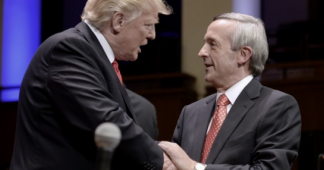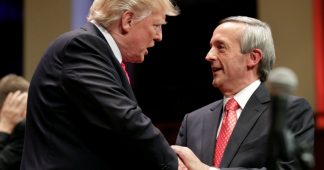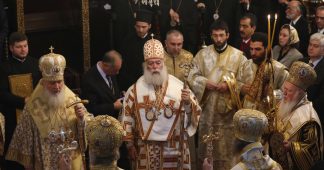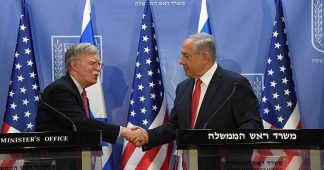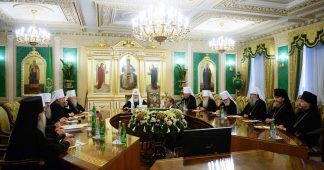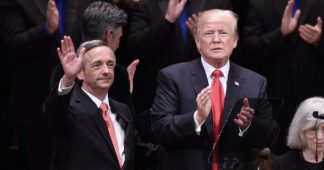The president’s photo op outside St. John’s Church was emblematic of his appeal to the religious right.
By
He wielded the Bible like a foreign object, awkwardly adjusting his grip as though trying to get comfortable. He examined its cover. He held it up over his right shoulder like a crossing guard presenting a stop sign. He did not open it.
“Is that your Bible?” a reporter asked.
“It’s a Bible,” the president replied.
Even by the standards of Donald Trump’s religious photo ops, the dissonance was striking. Moments earlier, he had stood in the Rose Garden and threatened to unleash the military on unruly protesters. He used terms such as anarchy and domestic terror, and vowed to “dominate the streets.” To clear the way for his planned post-speech trip to St. John’s Church, police fired tear gas and rubber bullets into a crowd of peaceful demonstrators.
A few hours after the dystopian spectacle, I spoke on the phone with Robert Jeffress, a Dallas megachurch pastor and indefatigable Trump ally. He sounded almost gleeful.
“I thought it was completely appropriate for the president to stand in front of that church,” Jeffress told me. “And by holding up the Bible, he was showing us that it teaches that, yes, God hates racism, it’s despicable—but God also hates lawlessness.”
“So,” he added, “I’m happy.”
“I don’t know about you but I’ll take a president with a Bible in his hand in front of a church over far left violent radicals setting a church on fire any day of the week,” wrote David Brody, a news anchor at the Christian Broadcasting Network. (Trump selected St. John’s, which has hosted presidents since James Madison for worship services, because protesters had set a fire in its nursery the night before.)
“I will never forget seeing [Trump] slowly & in-total-command walk … across Lafayette Square to St. John’s Church defying those who aim to derail our national healing by spreading fear, hate & anarchy,” wrote Johnnie Moore, the president of the Congress of Christian Leaders.
In an email to me, Ralph Reed, the chairman of the Faith and Freedom Coalition, heaped praise on Trump for his visit: “His presence sent the twin message that our streets and cities do not belong to rioters and domestic terrorists, and that the ultimate answer to what ails our country can be found in the repentance, redemption, and forgiveness of the Christian faith.”
Andrew Whitehead, a sociologist at Clemson University, has argued that Trump’s religious base can best be understood through the lens of Christian nationalism. In his research, Whitehead has found that white Protestants who believe most strongly that Christianity should hold a privileged place in America’s public square are more likely than others to agree with statements such as “We must crack down on troublemakers to save our moral standards and keep law and order” and “Police officers shoot blacks more often because they are more violent than whites.”
Whitehead told me in an interview that Christian nationalism is often not really about theology (and thus can’t be ascribed to all conservative churchgoers): “It’s about identity, enforcing hierarchy, and order.”
That Trump’s religious posturing has little to do with religion has long been a matter of conventional wisdom (see: Corinthians, Two); fewer have grasped the extent to which that’s true of Trump’s “religious” base as well.
After the president’s unannounced visit to St. John’s, Mariann Budde, the Episcopal bishop of Washington, D.C., gave an outraged interview to The Washington Post. “Everything he has said and done is to inflame violence … We need moral leadership, and he’s done everything to divide us, and has just used one of the most sacred symbols of the Judeo-Christian tradition,” she said.
* McKay Coppins is a staff writer at The Atlantic and the author of The Wilderness, a book about the battle over the future of the Republican Party.
